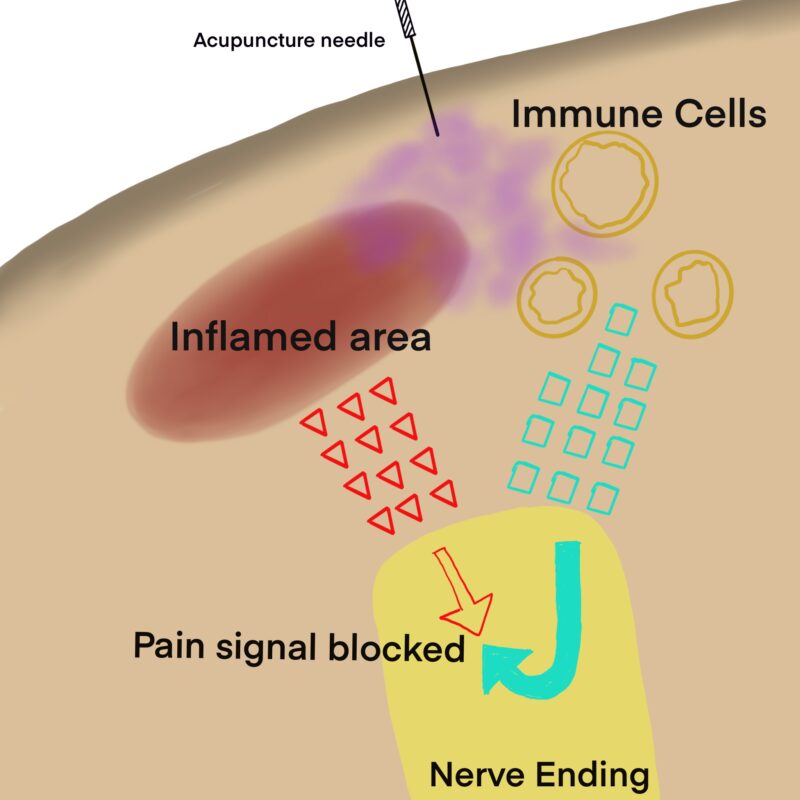Acupuncture is known to provide pain relief that can last for a significant period of time, extending for months or even up to a year after a course of treatment for some chronic pain conditions. Recent studies support the idea that endogenous opioids play a key role in this function. The provided link supports the involvement of endogenous opioids in neurostimulation-induced analgesia, which includes acupuncture.
Pain is an essential sensory signal that alerts our mind to the location and severity of an injury, prompting us to take necessary steps to protect the wound. As we all know, some injuries can be debilitating.
Suppose, in primitive times, humans needed to continue vital activities like hunting or seeking shelter despite a painful injury. Our bodies may have evolved a mechanism to manage this pain temporarily. We’ve all experienced that a painful injury can become less acutely painful or “numb” after a while, suggesting the existence of such a natural, internal pain-masking mechanism.
A synthetic opioid, such as morphine, reduces the perception of pain by attaching to opioid receptors on nerve endings. This action effectively blocks the pain signal that is meant to travel to the brain.
Our bodies naturally produce endogenous opioids, such as β–endorphin and enkephalin. These natural pain-relieving substances are found in the central nervous system (brain and spinal cord) and also at peripheral sites. Research indicates that β-endorphin, enkephalin, and dynorphin are all released by acupuncture, with the specific peptide depending on the frequency of electrical stimulation used in electroacupuncture.
Peripheral endogenous opioids are released by immune cells, including white blood cells such as macrophages and lymphocytes, that tend to congregate near a painful site where there is inflammation and tissue damage.
When an acupuncture needle is inserted, the local stimulation and potential release of chemical mediators (like chemokines) can trigger the surrounding immune cells—including macrophages—to release their stored endogenous opioids locally, contributing to pain relief at the site of inflammation. Specifically, electroacupuncture has been shown to regulate chemokines, which in turn lead to an increase in opioid-containing macrophages at the inflamed site.


